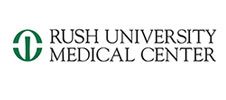Snapping Scapula Syndrome
Background
The space between the scapula and chest wall is called the scapulothoracic space.Snapping scapula syndrome is when your scapulothoracic joint feels like it or sounds like agrating, grinding, or popping sensation. Overall this syndrome is rare and when it occurs there is inflammation of the bursa in the space.
Anatomy
The scapulothoracic space comprisesfoursignificant muscles, the serratus anterior, the subscapularis, the rhomboids, and the chest wall muscles. The bursa that sits in the middle can get inflamed and cause bursitis. Usually, this occurs at the tip of the scapula or the “superior medial angle” of the scapula, as this is the closet part of the scapula to the chest wall.
Causes
Snapping scapula can be caused by inflammation of the soft tissues or by the bones of the chest wall and scapula connection. For the inflammation diagnosis,the bursa usually gets thickened, which can cause pain and “snapping.” Another reason is if the padding or muscles of the scapula get week and shrink, and the bones are more likely to rub in this area.
For boney causes, a fractured rib or small tumor can grow in that place and cause a mechanical snapping. Another phenomenon is if there are any abnormal curves or bumps (called Luschka’s Tubercles) on the upper edge of the scapula closer to the center of the back. When this occurs, the body produces a response of bursitis and snapping in that area.
Symptoms
These can include many different symptoms listed below:
- Grating
- Grinding
- Snapping
- The scapula thumps over the bump on the chest wall
- Pain at the scapula
- Dyskinesis or poor movement of the scapula
Diagnosis
Diagnosis can be the most challenging part. Many times, patients have seen numerous doctors without any relief. This is a rare diagnosis, and clinicians can miss this if the proper tests are not administered. Dr. Garcia will perform an extensive scapula exam to evaluate its movement and pain areas. A complete shoulder and neck exam is also performed to look at other areas of referred pain. Following this, if Dr. Garcia thinks you might have snapping scapula syndrome, he will get these studies:
- X-rays of your scapula
- MRI of your scapula
- CT of the bones of the scapula and chest wall
- Sometimes an EMG to rule out other nerve issues
Treatment
Nonsurgical:
Many patients can be treated with non-surgical treatment, which includes:
- NSAIDs
- Rest
- Scapular physical therapy
- Stretching
If these treatments are unsuccessful, Dr. Garcia will perform an ultrasound-guided injection of your scapulothoracic space. This is done for both treatment and diagnostic purposes. In many cases, this injection alone can improve symptoms.
Surgical:
Dr. Garcia recommends surgery if all the treatments above failed and the patient is still living with pain. The injection is very important for determining success after surgery, and data suggests a good response from the injection infers better results after surgery.
Many surgeons still perform this surgery open, but Dr. Garcia has advanced training and can perform this entire surgery through two or three small arthroscopy holes. The most effective treatment for snapping scapula syndrome is to remove the inflamed tissue from the scapula thoracic space arthroscopically called an “arthroscopic bursectomy”. The more challenging part is removing a piece of the scapula (from the superior medial angle of the scapula) to remove the grinding and popping. Dr. Garcia does this through an arthroscopic technique to precisely remove the bone while avoiding damage to the surrounding muscles and tendons.
After Surgery
Physical therapy is more involved after surgery. Patients wear a sling following scapula surgery for roughly 4-6 weeks and do not start any significant therapy for 4 weeks. For more information, visit Dr. Garcia’s section on post-operative rehab protocols.
Outcomes:
Overall outcomes of this surgery are good, with more recent data suggesting success rates up to 70-75%. Again, given the success rates are not 90-100% all non-operative treatment should be considered before undergoing this surgery.


















